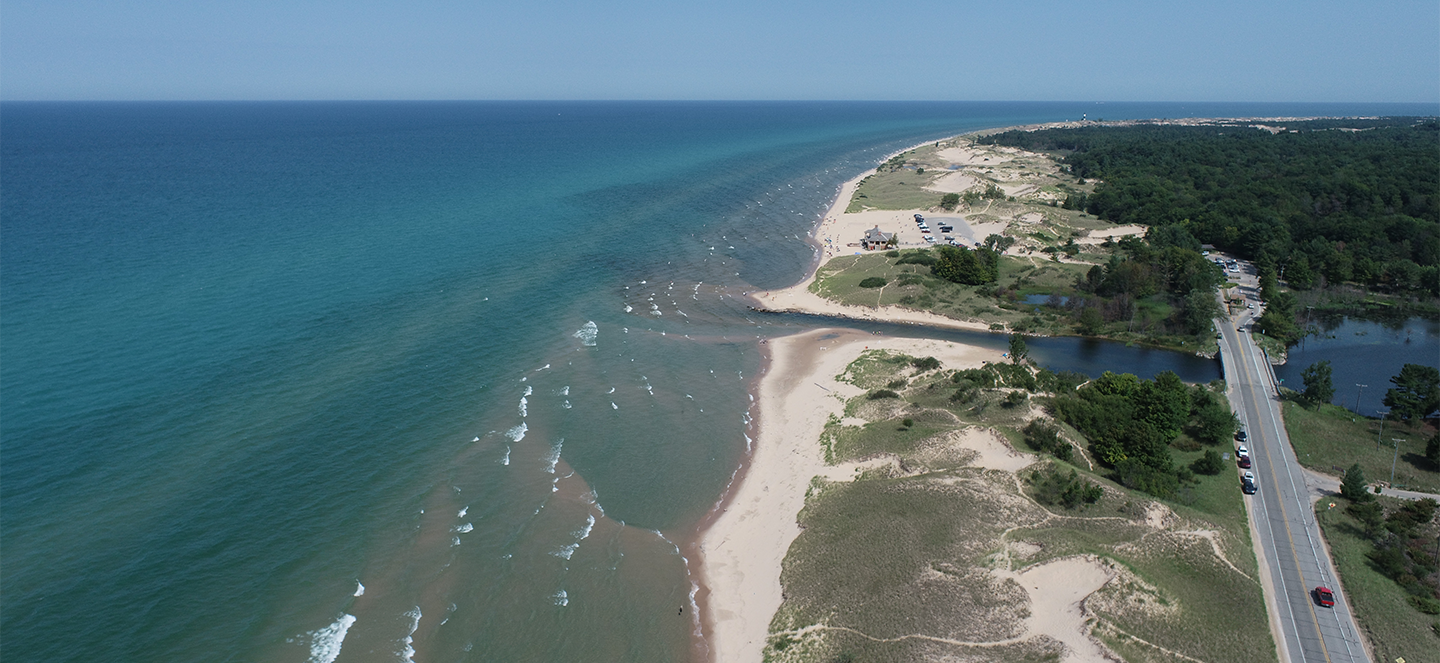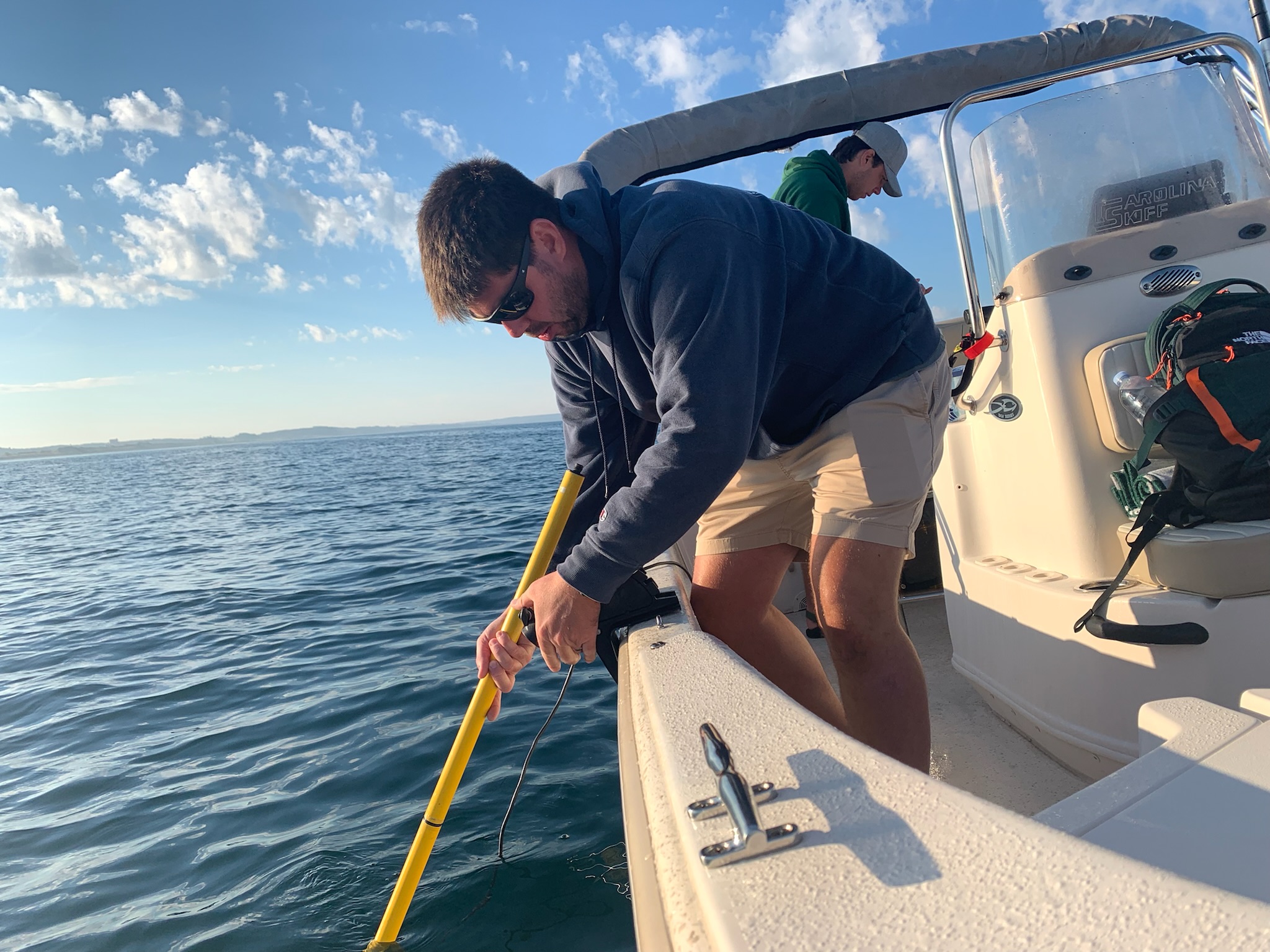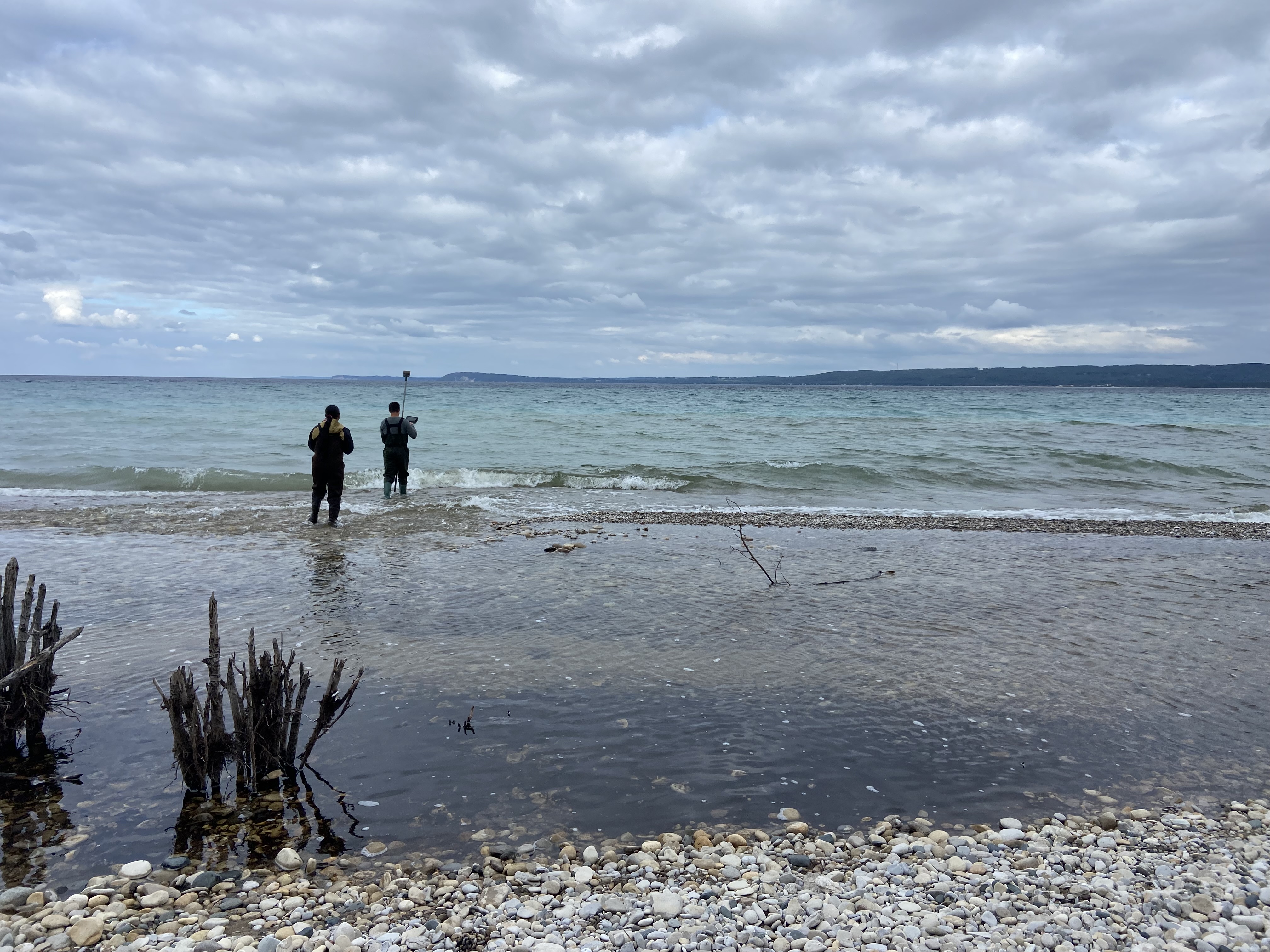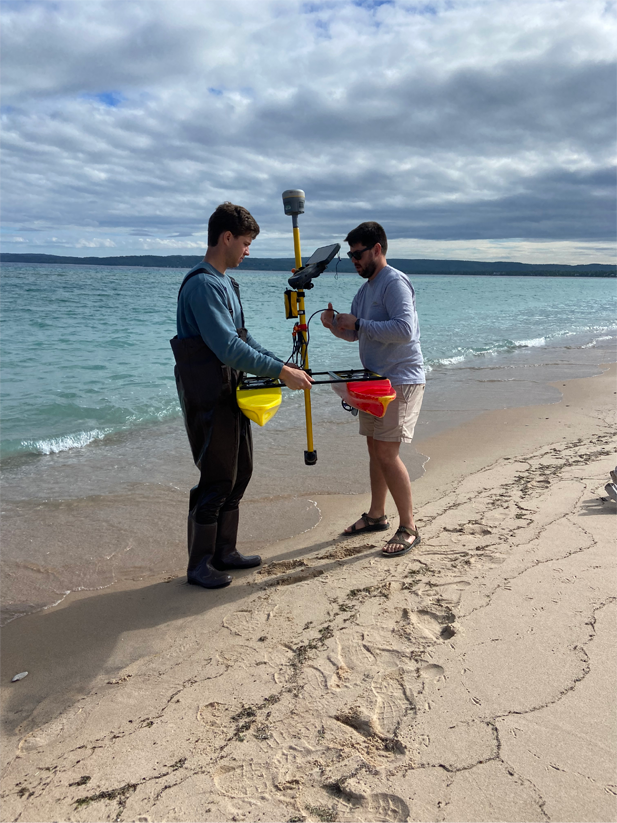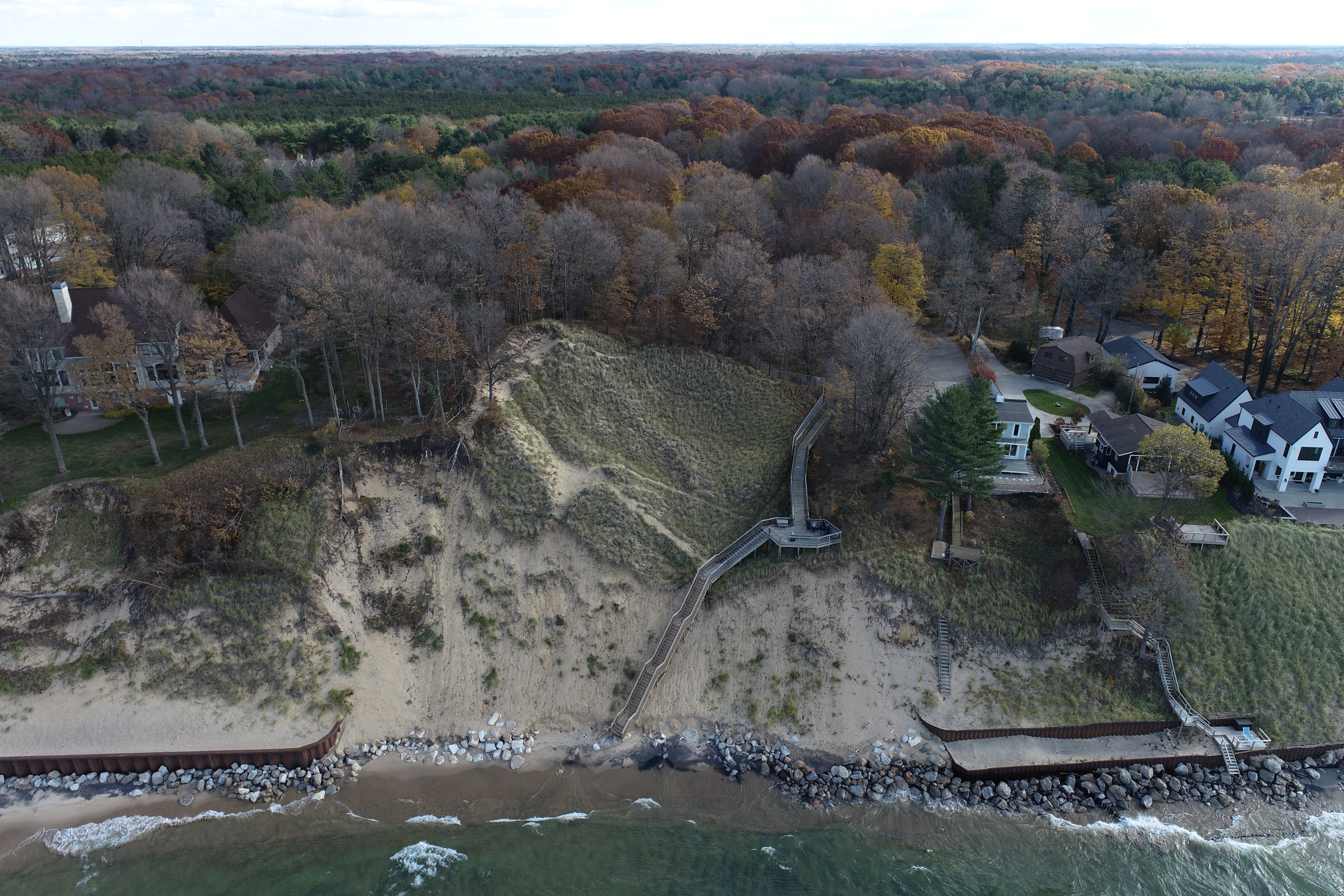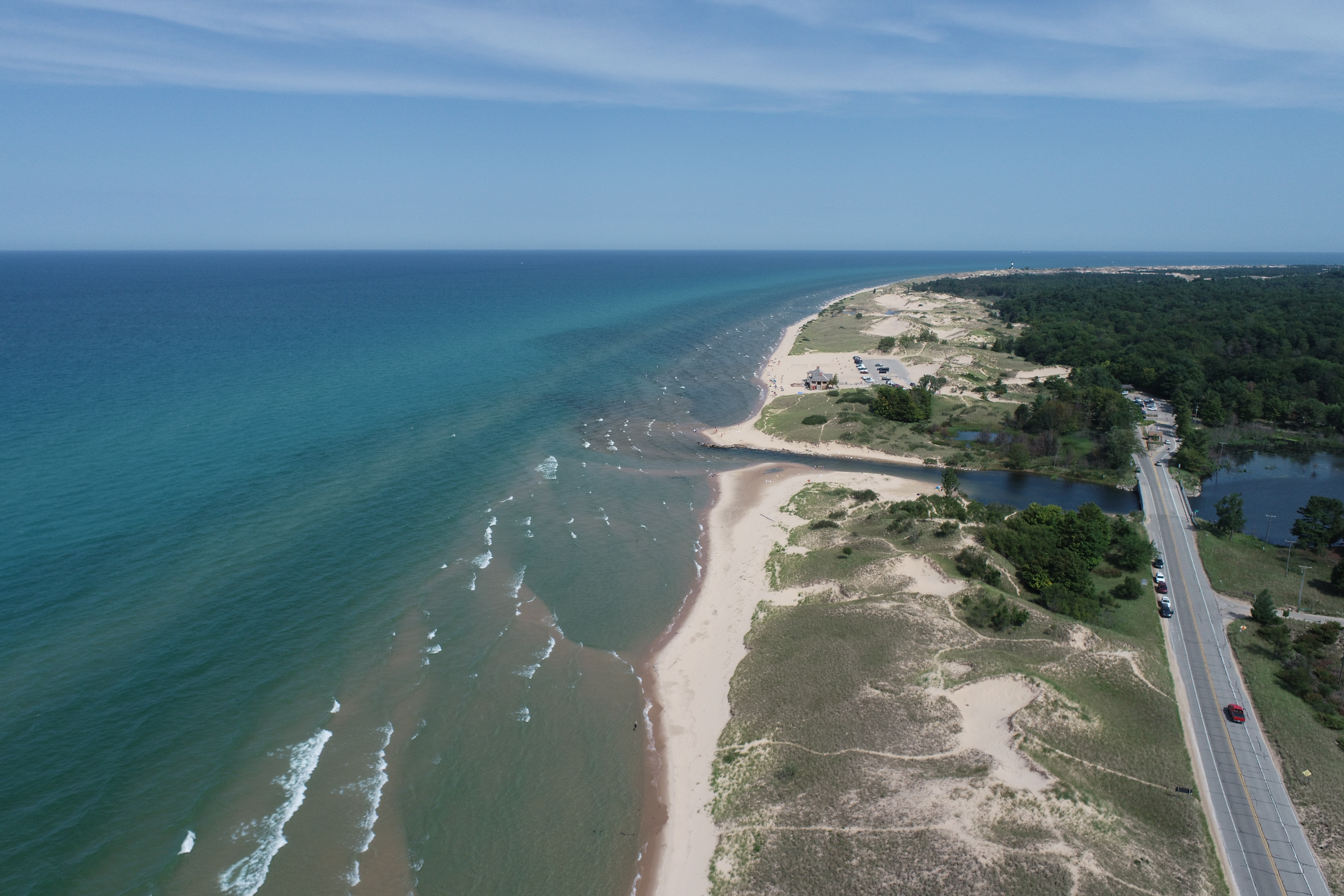Four years ago, the Great Lakes coastlines were in crisis.
Waters rose rapidly from historic lows in 2013 to record highs in 2020. Beaches once enjoyed by tourists and locals disappeared overnight. Houses built atop bluffs teetered dangerously close to the edge as waves ate away at the sand. Decks, beach entrances and even homes were washed into the lake. Property owners built boulder barriers along their bluffs and shores to stave off the encroaching waters.
Ethan Theuerkauf, a coastal geomorphologist and assistant professor in MSU’s Geography, Environment and Spatial Sciences Department, was contacted by many community leaders desperate for answers. They wanted to learn more about coastal erosion and how they could stop it.
He and his team trained citizens to collect data, collaborated with the State of Michigan on research and educated policymakers on best practices for coastal erosion. Then, as the waters eventually receded, so did the conversations about coastal erosion.
Without the pressure of rising waters, many communities shifted their focus to the many other issues demanding their attention. But Theuerkauf says now is the time to plan for when lake levels inevitably rise again.
